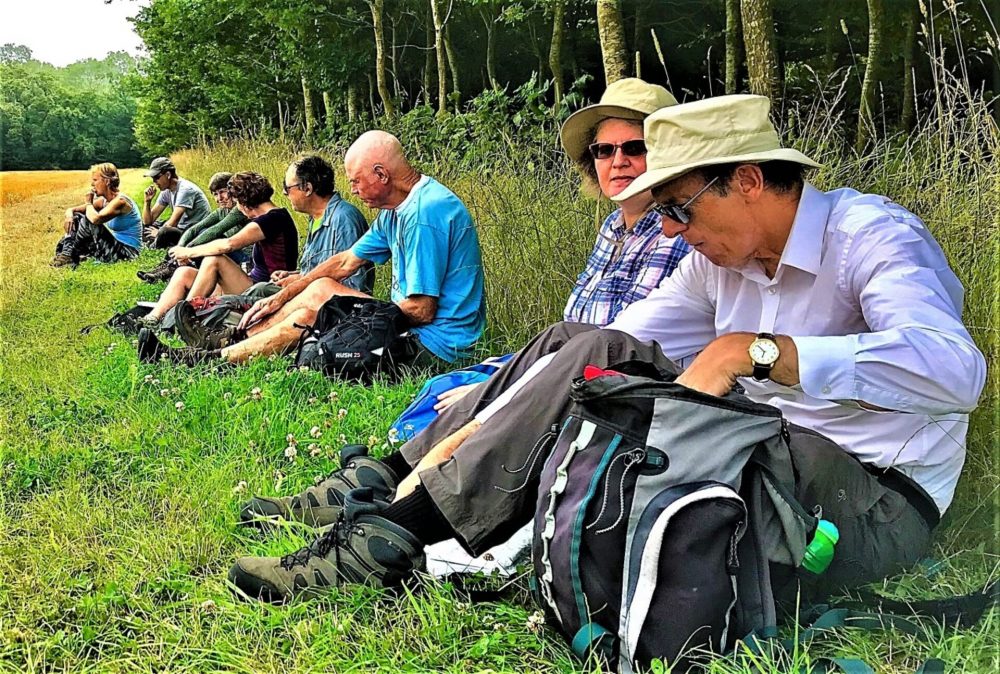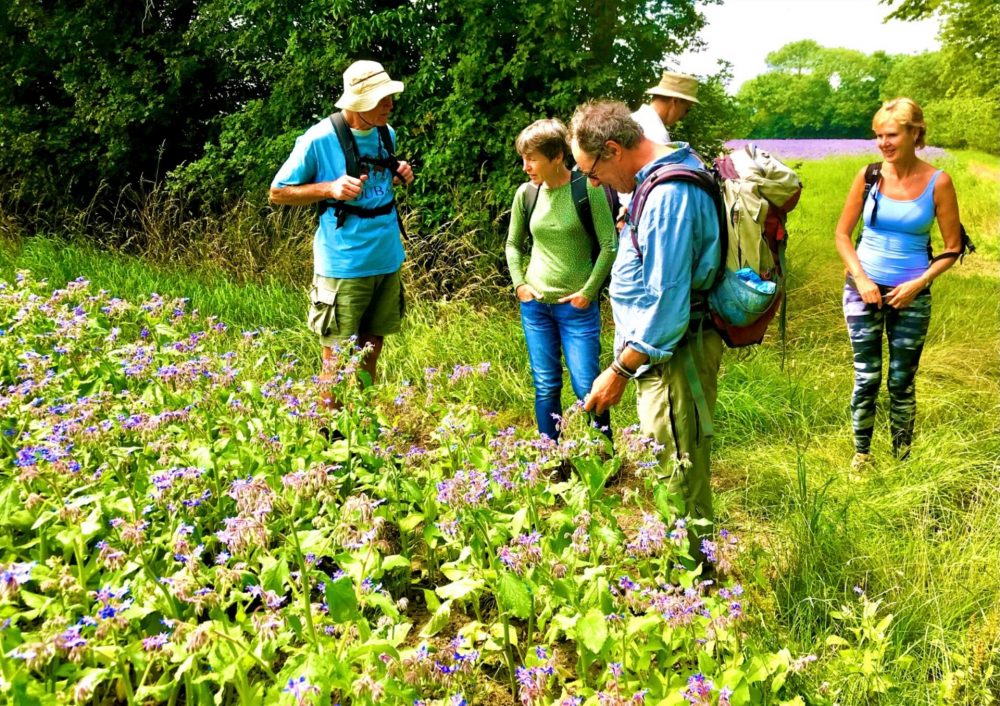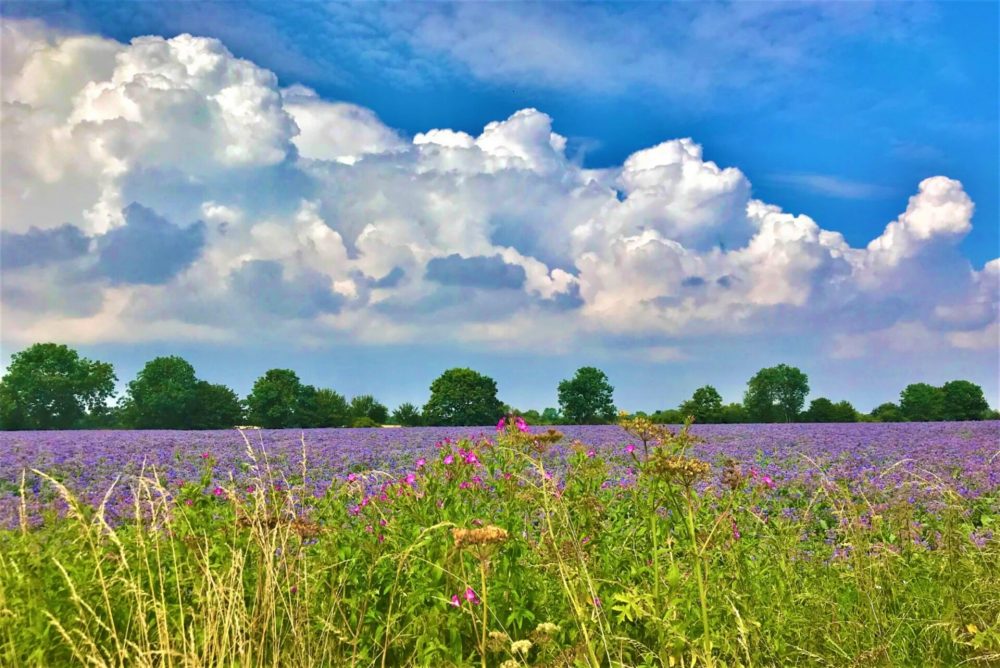Text and photos contributed by Patrick Meehan.
The French philosopher Montaigne famously said his life had been filled with terrible misfortunes – most of which never happened. And so it was on the morning of Sunday 25th July 2021, as Glen Richards led out a small party of IOG adventurers from All Saints Church Laxfield, to explore the local area. The weather forecasts in the days prior threatened a terrible misfortune of thunder, lightning, and rainfall of biblical proportions – most of which never happened.
At least not near Laxfield, a small village in northern Suffolk that arose in Saxon times, and is currently famous for having one of the biggest communal playing fields in Suffolk. People in nearby towns and villages know Laxfield because of its famous old pub – the King’s Head or ‘Low House’ – where there is no bar, and the beer is still drawn from barrels in the tap room.
Whilst first completing a short loop around All Saints Church, the skies were overcast. However, the ‘twice-around-the church’ trick seemed to work – because thereafter we enjoyed sunny skies and balmy temperatures of up to 19°C, cooled by the occasional zephyr. Perfect walking conditions, as they say.
Moving eastwards cross-country out of Laxfield through Ubbeston towards the Heavingham/Cranfield area, Glen then led us northwards via Barell’s Hill near Huntingfield, where we skirted the turreted, Grade 2-listed Huntingfield Hall. The latter seemed in a little disrepair, with several clumps of buddleia boldly growing from the parapet. Shortly afterwards, we halted for a leisurely lunch in the shade of a line of beech trees skirting a long meadow, which had been recently cut for forage. South of us, across the meadow and through the trees, we could just make out the tower of St Mary’s Church in Huntingfield.

Glen informed us that the first Baron de Huntingfield was one of 25 Barons to act as surety to the Magna Carta, the royal charter of rights agreed by King John of England in 1215 to make peace with a group of rebel barons. A visit to Huntingfield is a recommended adjunct to the Magna Carta Trail: http://magnacartatrails.com/trails/east-of-england/st-albans-and-bury-st-edmunds/
A little further along, we inadvertently startled a pair of small deer in the ripening, thigh-high corn, who took off at a pace. Having gained a safe distance, they turned inquisitively, heads stock-still and barely visible above the motionless corn, to stare at the back-packed, booted interlopers who had disturbed their afternoon siesta. And then they were off!

Sky-blue fields of borage were a welcome feature throughout the walk, enlivening the usual countryside palette. An edible herb, the star-shaped leaves and flowers are often used as a garnish in summer drinks – particularly Pimms – or frozen into ice cubes.

Another feature of the latter part of the walk were the high blackthorn hedges along the roadside verges, some reaching to thirty feet, many laced through with long, searching tendrils of flowering blackberry briars. A further treat we spotted (and sniffed) was the beautifully perfumed dog rose, (Rosa canina), so called because its root was said to cure a bite from a wild dog. (Watch out for them up to the end of August).
Winding our ‘weary way’ back to Laxfield – where we quenched our mighty thirsts at the packed Royal Oak Pub – we noted how few other walkers we had met. Most likely, we adjudged, they had been deterred by the ‘thunderous’ weather forecasts of late!
